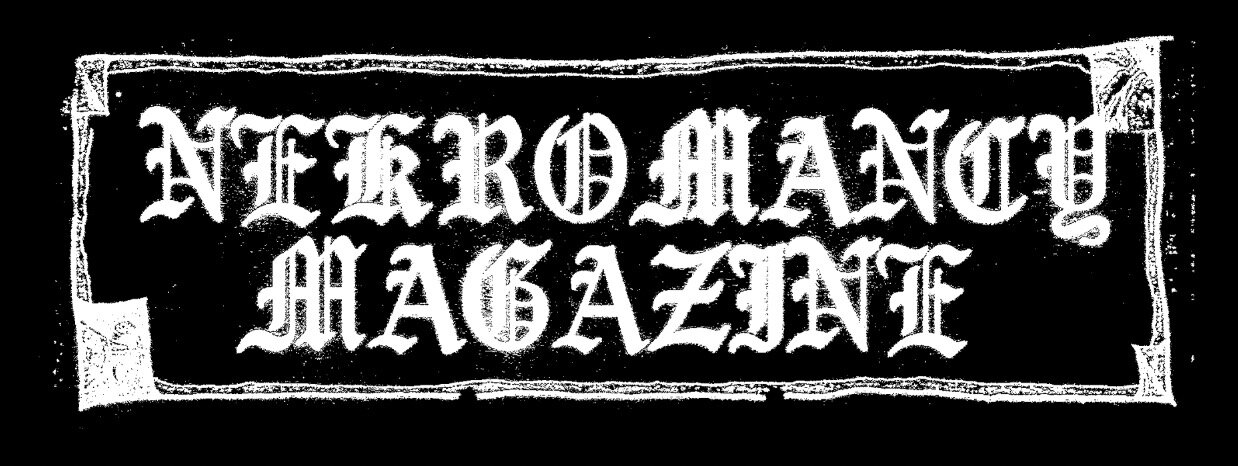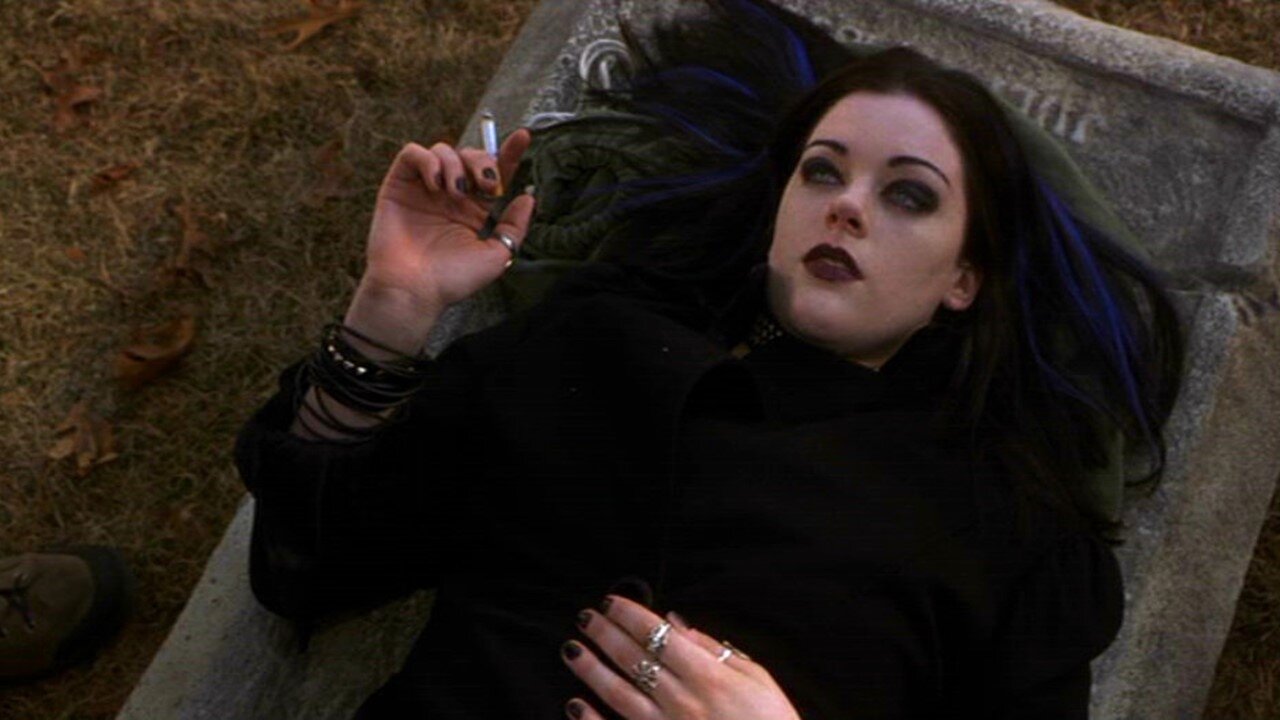Book of Shadows: Blair Witch 2 - Subverting Expectations, Before It Was Cool
March 28, 2021 ● Mike Slater
Artisan Entertainment
“How many Heather Donahues does it take to screw in a light bulb?”
At the current time of writing, Book of Shadows: Blair Witch 2 (2000) sports a crippling iMDb rating of 4.0 and an even worse Metascore of 15, making it quite possibly one of the worst received sequels of all time. On the surface, the reasons for this seem obvious; a rushed, studio cash grab that replaces the slow burning terror and suspense of the original, with an overacted (and infamously over-edited) teen gore-fest. Yet what that doesn’t tell you, is how (as well as being an insanely fun 90’s/00’s nostalgia trip) it shines in its self-awareness; being a meta take on an already postmodern classic, it further blurs the lines between reality and fiction… Just not in the way everyone was expecting.
Before the dust had settled from the surprise, seismic smash of The Blair Witch Project (1999), studio Artisan Entertainment decided to cash in on the box office phenomenon by green-lighting a sequel, scheduled for release the very next year. Wanting to retain the found footage ambiguity of the original, they hired documentarian Joe Berlinger, to direct. With a background rooted solely in true-crime documentaries, who better to carry on the same “Based on a True Story” aesthetic, right?
Wrong. Although Berlinger admired the film, he loathed what he called the “lazy consumption of media”; the effect TBWP was having on the general public. Having built a career documenting reality, he was understandably frustrated with audiences’ willingness to accept that anything with the aforementioned tagline or shaky video footage was, in fact, real. Realising how potentially dangerous this marketing tactic was to both the subjects and the audience, he wanted to focus the sequel on the mass hysteria caused by the original, to tell a cautionary tale about how the distortion of reality in the media could have dire consequences.
The film’s cold open lulls us into this false sense of authenticity, as the audience is presented with archive footage from media personalities such as Roger Ebert, Conan O’Brien and Kurt Loader, reporting on the Blair Witch fever sweeping the nation following the release of the original film. We’re then shown the aftermath the Blair Witch had on the real-life village of Burkittsville, where the events of the film allegedly took place. Berlinger spent time here when developing the screenplay, to discover how the film had impacted the lives of its residents. His findings served as direct inspiration for the films central characters, the first of which, Jeff (Jeffrey Donovan), we meet during a montage of interviews with both real-life residents and actors posing as such. Jeff is an amateur videographer who has spent time in a psychiatric ward, foreshadowing the events to come and solidifying the potential danger that comes with lying to your audience. So far so good? Well here’s where we get our first taste of studio tampering and where things start to take a turn for the Durst.
Artisan Entertainment
In a jarring time-skip back to 1999 (a year before the events of the film), Jeff is locked up in an insane asylum, screaming into the camera and throwing himself against a cushioned cell wall before being strapped to a bed, drugged and force-fed a grotesque viscous liquid. Not only is this scene a complete non sequitur, it’s stylistically a juxtaposition to everything Berlinger shot. The sequence is awash with wide-angle lenses, sped-up visuals and a dreary colour palette straight out of a Drowning Pool video. This is all capped off with Marilyn Manson’s Disposable Teens blaring over the opening credits, which would set the tone for the rest of the film, as Carter Burwell’s original score is almost entirely replaced in favour of a veritable smorgasbord of nu-metal era anthems.
This scene, and many others throughout the film, is a classic example of studio interference. Unhappy with the tonal direction of the film, Artisan decided to ditch the slow burn and double down on the zeitgeist, adding grungy visual effects wherever it saw fit, muddying the atmospheric intentions. They even went so far as to rearrange the chronology, effectively giving away the ending before the film had even found its feet.
Alongside the newly replaced soundtrack, these changes were meant to help cater the film to the young alternative demographic, akin to the film’s central cast of characters. Berlinger had written the characters to embody specific factions of the Blair Witch fan-base: Jeff is an example of how a mentally unstable person could view the film, given its “true story” status. Stephen (Stephen Barker Turner) & Tristen (Tristine Skyler) serve as an allegory for the real versus fake debate happening amongst audiences. Erica (Erica Leerhsen) represented the Wiccan community, who felt the film painted their way of life in a negative light, and Kim (Kim Director) portrayed the outcasts who felt the mythos surrounding the film gave those and others like them, something to connect with. However, Artisan decided to inject heavy doses of gore to proceedings during reshoots, effectively transforming the characters into alt-versions of stereotypical teen slasher fodder - the Goth & the Witch replacing the Jock & the Virgin etc. This heavy pandering to the proposed masses had upset even the most fervent Blair Witch fans; the film was seen as a cynical, generic cash-in that had no respect for the source material, earning it a critical and audience panning across the board.
Artisan Entertainment
Now, that being said, the aspects that ruined the film critically are actually what make it so damn fun to watch. The over-acting, the cringe-worthy dialogue, the dated cinematography and, of course, the nu-metal soundtrack. I first saw Book of Shadows at a movie night with friends. They’d enjoyed it so much that they were hell bent on making me watch it. Even if they were laughing at it (and trust me, there’s a lot to laugh at), I found the blueprint of the film compelling, taking the beloved original and making that the antagonist, scrapping the supernatural altogether. If it were any other horror film it’d be seen as a cult favourite, but its attachment to the original is ultimately its undoing, even if its self-referential nature is where it truly shines. The thing that bewitched people about the original was how something so subtle in its execution, could strike universal terror as effectively as it did. BOS rebels against this formula with every fibre of its being; doing a sequel in the same style was never going to recapture the atmosphere of the original, but they certainly went too far in the opposite direction for most people’s tastes. A brave, but ultimately, self-sabotaging decision.
As someone who first watched Book of Shadows two decades after its initial release, I’d argue that the obnoxious, out-dated nu-metal aesthetic is now one of its more enjoyable and charming qualities, in a nostalgic sort of way; and that, removed from the crushing weight of expectation from the original, it stands the test of time as a meta-psychological horror about the nature of fanaticism and obsession, that is more relevant in today’s era of fake news than it has ever been. As we enter the age of Deepfake, where video editing is becoming practically untraceable; I think audiences who give it another chance will see the unintentional brilliance of the film and the essence of what Berlinger was trying to tell us over 20 years ago. Don’t believe everything you see, especially if it’s caught on camera.
Mike Slater ● Writer
Mike is a film and video game writer based in Manchester. A (mostly) benevolent contrarian, he likes to dissect the “bad” to shine a light on the artistry lurking within. As a lifelong horror fan, he’s always on the hunt for nightmare inducing cinema.



